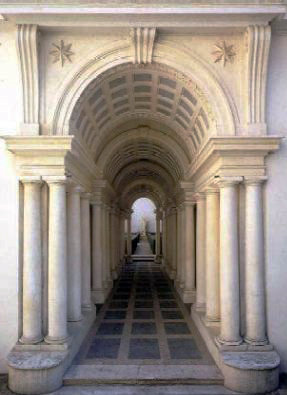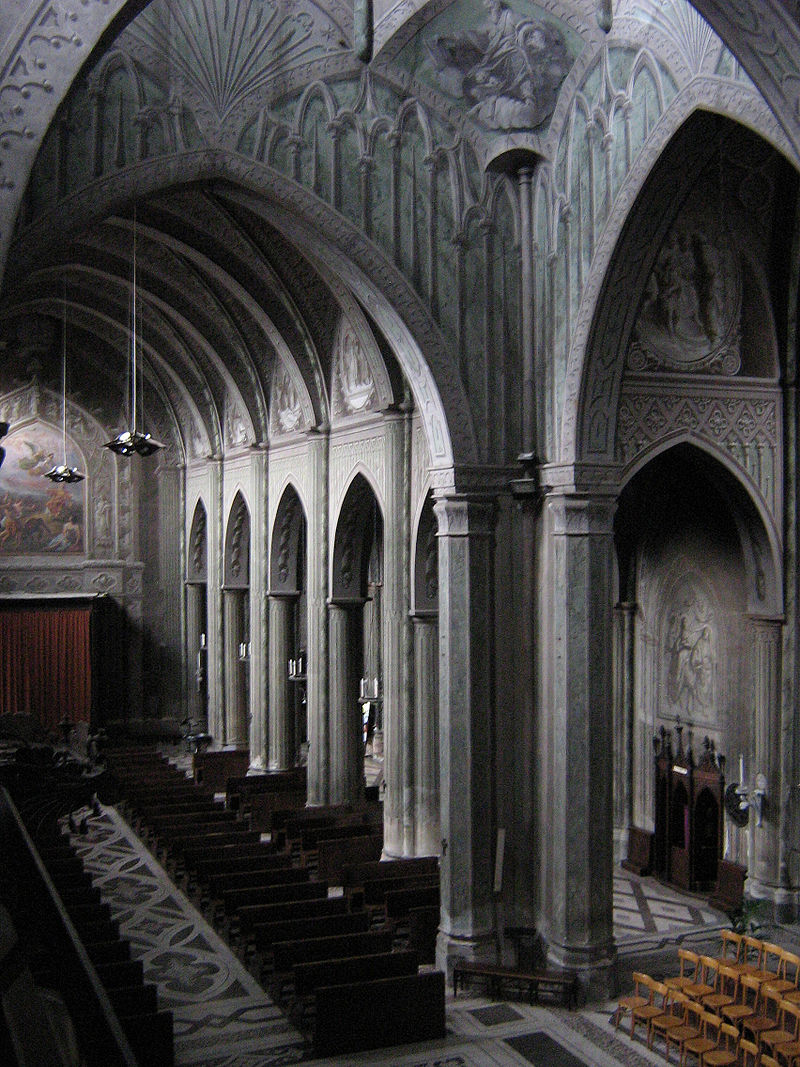Trompe l’oeil
Trompe l’oeil is the term used for a technique that creates the illusion of reality. It is French for ‘fool the eye’ or ‘deceive the eye’. It has long been used by artists for paintings and murals, but can also be found in architecture where walls, ceilings, domes and other surfaces are painted with designs that ‘trick’ the observer into seeing other features such as windows, columns, stonework, ornaments and so on.
The first instance of trompe l’oeil perspective techniques being used in architecture can be found in the medieval period, but it became increasingly common during the Renaissance. Artists were often employed to paint the inside of churches, to give walls the appearance of decorative features, columns, windows, views and so on. Perhaps the most famous example of the technique is Michelangelo’s frescoes on the ceiling of the Sistine Chapel in the Vatican.
The technique is also found in the design of stage sets where forced perspective can be used to give the impression that the stage is deeper than it is.
See also: Trompe l'oeil (part 2)
[edit] Related articles on Designing Buildings
- Architectural styles.
- Architrave.
- Arts and craft movement.
- Bas-relief.
- Baroque architecture.
- Classical orders in architecture.
- Cornice.
- Elements of classical columns.
- English architectural stylistic periods.
- Entablature.
- Fresco.
- Frieze.
- Finishes.
- Gargoyle.
- Grotesque.
- Large-scale murals.
- Nineteenth century architecture.
- Parallax.
- Patination.
- Pilaster.
- Perspective.
- Scagliola.
- Skeuomorphism.
- Stained glass.
- Tessera.
- Trompe l'oeil (part 2).
[edit] External references
IHBC NewsBlog
IHBC Context 183 Wellbeing and Heritage published
The issue explores issues at the intersection of heritage and wellbeing.
SAVE celebrates 50 years of campaigning 1975-2025
SAVE Britain’s Heritage has announced events across the country to celebrate bringing new life to remarkable buildings.
IHBC Annual School 2025 - Shrewsbury 12-14 June
Themed Heritage in Context – Value: Plan: Change, join in-person or online.
200th Anniversary Celebration of the Modern Railway Planned
The Stockton & Darlington Railway opened on September 27, 1825.
Competence Framework Launched for Sustainability in the Built Environment
The Construction Industry Council (CIC) and the Edge have jointly published the framework.
Historic England Launches Wellbeing Strategy for Heritage
Whether through visiting, volunteering, learning or creative practice, engaging with heritage can strengthen confidence, resilience, hope and social connections.
National Trust for Canada’s Review of 2024
Great Saves & Worst Losses Highlighted
IHBC's SelfStarter Website Undergoes Refresh
New updates and resources for emerging conservation professionals.
‘Behind the Scenes’ podcast on St. Pauls Cathedral Published
Experience the inside track on one of the world’s best known places of worship and visitor attractions.
National Audit Office (NAO) says Government building maintenance backlog is at least £49 billion
The public spending watchdog will need to consider the best way to manage its assets to bring property condition to a satisfactory level.

















